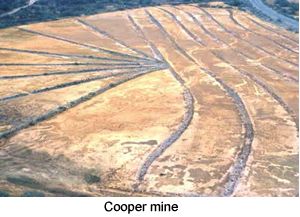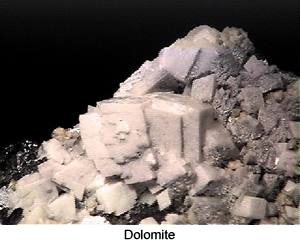Minerals are important in our society.
They create many useful products. The following information can help make
the products used in the lab more meaningful.
 Silica
gel is used to help keep products dry. The gel can keep water molecules away
from a product, and then the product will not be exposed to or damaged by
water. It is used is many powdered substances as a drying agent. Silica gel
is a hydrated form of quartz.
Silica
gel is used to help keep products dry. The gel can keep water molecules away
from a product, and then the product will not be exposed to or damaged by
water. It is used is many powdered substances as a drying agent. Silica gel
is a hydrated form of quartz.
Gypsum board, also called wallboard,
sheet rock, or plaster board, is used for walls in home and businesses. In
very old homes the walls were made with wood, metal netting, and plaster,
which was composed of powdered gypsum. The invention of gypsum board, made
it easy for construction workers to build walls. Now they simply put up wood
frames and nail the gypsum board onto them. The workers then put a thin
cover of plaster on the gypsum board, and the wall is finished. Plaster of
Paris also contains gypsum.
Fish weights are used to get fish line
into the water. Otherwise, it is so light that it would float. The lead in
these weights makes the line heavy.
Coins are a variety of
different metals. Pennies were once made of pure copper,
but to make them more resistant they are now made of a mixture of copper and
other metals.
Porcelain tile is mainly made of powdered
feldspar and clay. The powder is mixed with water, and then fired, producing
a hard, durable material. Porcelain makes excellent tiles, dishes, cups, and
dolls, to name a few items.
Steel is complicated using many
different mineral and rock ingredients. Iron ore is a rock that contains iron combined with oxygen. It is sourced from mines around the world.
Coke is made from coal. Once mined, the coal is crushed and washed. Flux is a term which describes minerals used to collect impurities during iron and steelmaking. Fluxes used include limestone and dolomite.
Vermiculite is a mica used
in agriculture and insulation purposes. In agriculture it is mixed with soil to create a more porous, absorbent soil. As an insulator, it is used both as a heat and sound insulating material.
 Minerals have many uses in our
society. You can add very easily to this lab as you learn more about how
minerals are used. Some companies in the mineral industry have informational
brochures that outline the use of their products. You may want to ask your
students if their parents have any examples that you can add to your
collection.
Minerals have many uses in our
society. You can add very easily to this lab as you learn more about how
minerals are used. Some companies in the mineral industry have informational
brochures that outline the use of their products. You may want to ask your
students if their parents have any examples that you can add to your
collection.
The goal of this lab is for students
to see different products that are derived from minerals and to analyze the
properties of minerals that make them useful. This list can help you provide
information about certain minerals that your students may see in the lab.
You may want to go over this material during your conclusion.